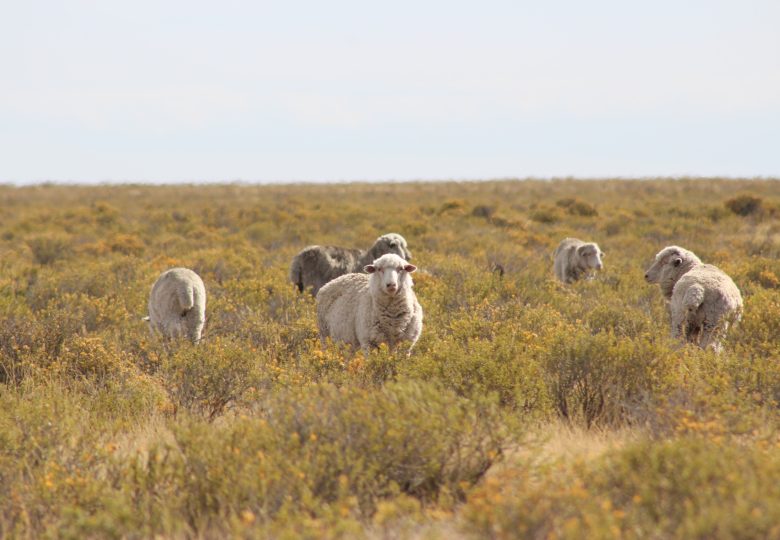Chemical of the month: Lanolin

By Toxicologist Ewa Daniél
What is it?
Lanolin is made from the wool from sheep. The wool contains a wax called sebum, which is a derivate from the sheep’s sebaceous glands. It protects the sheep by keeping the skin and wool moisturized and protects it from wind and weather.
The protective aspects are also relevant for humans, where refined Lanolin is used in the protection and treatment of human skin. Lanolin is an old ingredient and was already known to have been applied on people way back when Egypt was a superpower. It has very good cleansing, soothing and lubricating properties, and because of this lanolin can be used in formulation of ointments, creams and lotion and is thus found in many cosmetics and pharmaceuticals.
So, what is the problem?
For many years there has been disagreement whether Lanolin is allergenic or not.
Even though Lanolin is known to be a weak sensitizer, allergic reactions have been seen in dermatological patients. The first case was back in 1929 and later in 1950 several studies verified Lanolin’s sensitivity in dermatologic patients. The allergic reactions are typical, when it is used in pharmaceuticals used on sick skin, especially stasis dermatitis and leg ulcers.
Several studies show that allergic reaction to Lanolin has to do with the impurity of free wool alcohol, and by refining and purifying the lanolin the cases of allergic reactions will reduce. More studies have found that with a concentration of max 3% wool alcohol in the Lanolin, most patients with allergy to Lanolin alcohol can use product containing Lanolin without having allergic reactions.
In 1976 EEC cosmetic directive made it mandatory for companies to put a warning of potential harm on the label, if their products contained Lanolin. This law was retracted by second council amendment six years later.
Even though the law was retracted and it now is documented that Wool alcohol is the main cause of skin allergy, there is still some disagreement about Lanolin.
The disagreement is that Lanolin often is stated as being allergenic, but most reactions are seen in high risk patients and from Lanolin used in ointment and pharmaceuticals not in cosmetics.
In a study made in London 24.449 patients were tested with 30 % wool alcohol there was no difference in atopic eczema status between these groups. The highest prevalence of allergy to wool alcohols was among patients with leg dermatitis 6%, followed by anogenital dermatitis (3·23%;) The conclusion in the study was that the study illustrates that lanolin sensitization has remained at a relatively low and constant rate even in a high‐risk population (i.e. patients with recent or active eczema).
What the experts say
Albert M. Kligmann has written widely discussed articles about Lanolin, and in the article “Lanolin allergy: crisis or comedy “he writes:
“In my view, Lanolin must be classified among most marginal sensitizers in all of clinical medicine!”
Confirmation has since been obtained that reducing the content of natural free alcohols in Lanolin to below 3 % particularly in the absence of detergent residues, reduces the incidence of positive patch test reactions amongst selected Lanolin‐sensitive skin patients by 99.3 %. Only one reaction out of 149 subjects was recorded.
In an epidemiologic study with 825,000 people, Clark et al. estimated that the frequency of Lanolin allergy was as high as up to 6 per million (0.006%).
A Danish study by Nielsen et al. 793 healthy persons with no skin symptoms were patch tested to different chemicals and none of the test persons had any allergic reactions to wool alcohols.
AllergyCertified
There has been some discussion about Lanolin in the past and the later retracted EU law from 1976 has still made some people skeptical towards Lanolin. But Lanolin has been found safe to use in cosmetic products, the allergic reaction is typical seen when it has been used in pharmaceutical treatments for sick and wounded skin.
Lanolin is allowed in AllergyCertified products, but the Lanolin needs to be purified and the level of wool alcohol must be below 3 %.
AllergyCertified has just certified the first raw material with Lanolin, an allergy risk assessment has been made for this raw material and the certified Lanolin fulfill our strict criteria. This means that this Lanolin is purified and has been refined to a point where the level of wool alcohol is found safe and the trace of pesticides are practically undetectable. AllergyCertified has full knowledge about the purification made and has laboratory test.
Literature
- A.C de Groot:Non fragrance Allergens in Cosmetics (part 1 ) Lanolin & Lanolin alcohol. Mongraphs in Contact Allergy vol 1, 2018
- A.M Kligman Lanolin allergy: crisis or comedy. Contact dermatitis : vol 9, 1983
- A.M Kligman The myth of Lanolin allergy. Contact dermatitis : vol 29, 3; 2007
- C.A. Henderson et al the Frequency of lanolin contact allergy. Contact Dermatitid vol 32, issue 1, 1995
- Clark et al: Lanolin of reduced sensitizing potential. Contact dermatitis: Vol 7, issue 2, 80 ; 1981
- M. Fransen et al:Contact allergy to lanolin: temporal changes in prevalence and association with atopic dermatitis. Contact dermatitis vol 78, issue 1, 2017
- N.H. Nielson: Allergic contact sensitization in anunselected Danish population. Acta Dermato-venereologica:vol 72; 456–464; 1992
- S.H. Wakelin et al A retrospective analysis of contact allergy to lanolin. Britisk journal of Dermatology
- T.C. Pelletier Lanolin and sheeps wool allergies: http://askanaturalist.com/lanolin-and-sheep’s-wool-allergies/
